This year marks the 100th anniversary of the Prisoners (Temporary Discharge of Ill Health) Act, an act of British parliament that became known as the Cat and Mouse Act. It was rushed through parliament in 1913 to allow the discharge of hunger-striking suffragettes from prisons as a response to growing public disquiet about the use of forcible feeding.
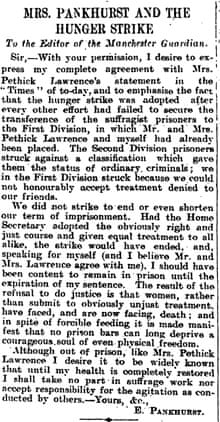
Hunger striking has long been recognised as a non-violent form of protest, and was first used by imprisoned suffragettes in 1909. As the letter to the Manchester Guardian (left) from Emmeline Pankhurst explains, suffragette prisoners were not striking against their imprisonment, but the government's refusal to acknowledge the crimes for which they were being imprisoned as political acts. Political prisoners received different treatment in prison - and, of course, recognising the suffragette's militant actions as political, rather than merely criminal, added legitimacy to the political argument for women to be entitled to the vote.
The first suffragette to go on hunger strike, Marion Wallace Dunlop, was released after three days, in July 1909, and, following her example, other imprisoned suffragettes also went on hunger strike.
However, the government was not prepared to release all suffragettes, and started forcible feeding on prisoners the same year. Letters to the Manchester Guardian in October of 1909 demonstrate the strength of feeling the issue provoked - some calling for the suffragettes to be left to starve, others likening the hunger strike to suicide, with the attendant moral obligations of the issue.
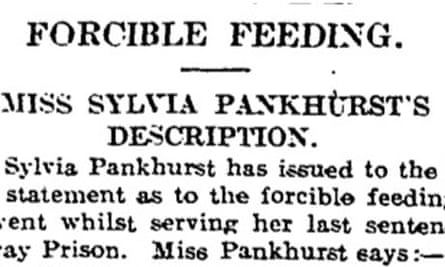
Emotions intensified as reports began to emerge of women's experiences of forcible feeding - in the report above, Sylvia Pankhurst describes how she "felt I would go mad with the outrage of the thing." An article appeared in medical journal Lancet in 1912, condemning the practice as torture. Force feeding demanded an invasion of the body - this was particularly abhorrent, both physically and mentally, to women fighting for their own emancipation, who already had so little control over their own lives. Some women were force-fed over 200 times.

The Cat and Mouse Act allowed for the temporary discharge of prisoners on hunger strike, allowing for their recovery and then rearrest - or, if they died, taking the responsibility away from the government. It became known as the Cat and Mouse Act as the pattern of release and arrest evoked in the public the perception of a cat playing with its prey; it ended up leading to wider public sympathy for the suffragette movement.
The beginning of the first world war in 1914, and the consequent cessation of militant suffragette activity, means there is not much evidence on the long-term effects of the Cat and Mouse Act. Statistics published by the Manchester Guardian in July 1913 suggest, however, that it would not have been a successful initiative - several suffragettes had absconded, and others would take up to five more years to serve sentences that should already have been completed.
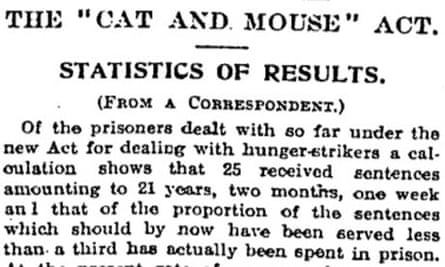
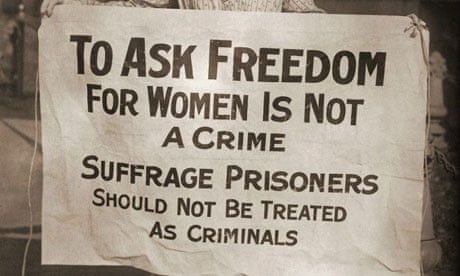
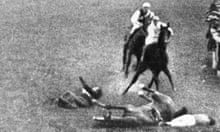


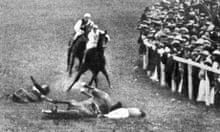
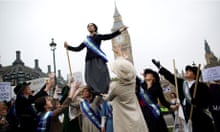
Comments (…)
Sign in or create your Guardian account to join the discussion